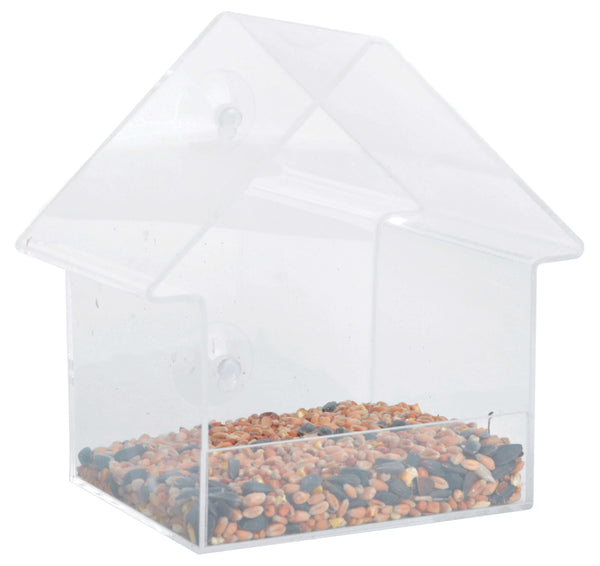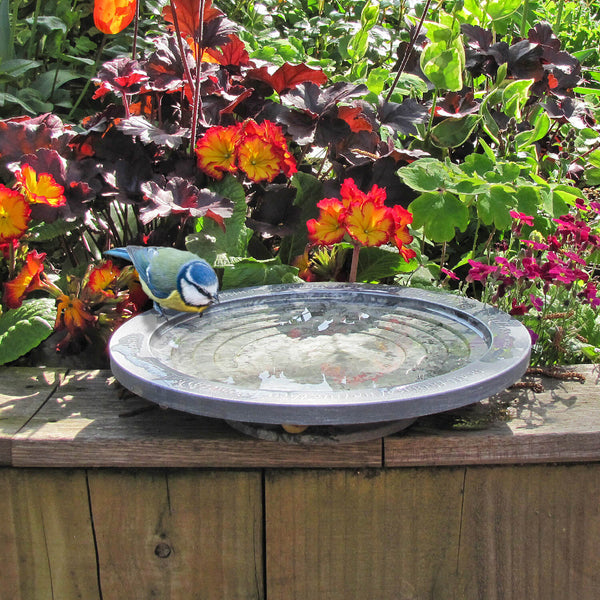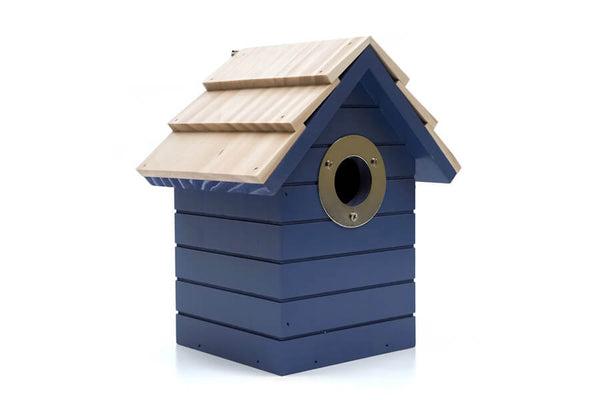UK Birds beginning with C
Across the UK, birds that begin with the letter C grace our skies everyday. Whether it's the small birds or medium sized birds, we have got a whole crowd of birds beginning with the letter C in the UK.
Despite being connected by the first letter of their name, these birds each have their own set of characteristics. Come with us to learn more about the UK birds beginning with C.
Canada Goose
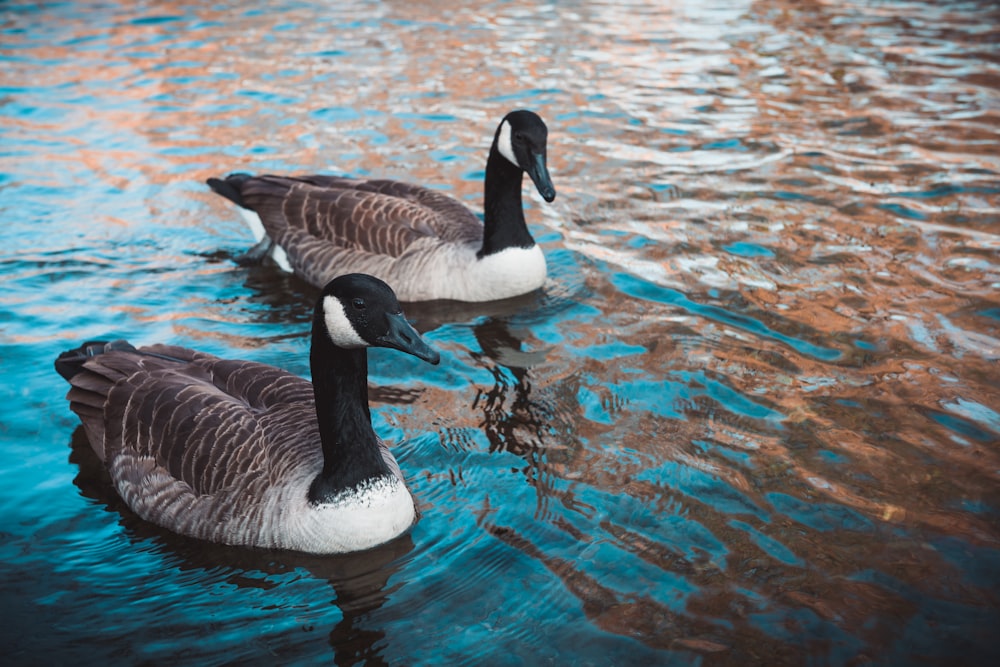
The Canada Goose is a North American native. This large bird is well known for its black and white head, brown body and it's noisy honking call.
Every year, the Canada Geese migrate from North America to the UK where they will spend the winter.
In the UK, Canada Geese typically arrive in autumn, seeking out suitable wetland habitats, lakes, and rivers where they can find ample food and safety from harsh winter conditions. While many Canada Geese migrate back to North America in spring to breed, some individuals may choose to remain in the UK year round if they find suitable habitat and food sources.
The adaptability of Canada Geese to urban environments has led to established populations in parks, golf courses, and other green spaces throughout the UK.
Capercaillie
Confined to Northern Scotland, this very large bird used to be distributed across larger sections of the UK.
Male Capercaillies are particularly notable for their dramatic appearance during the breeding season. They have iridescent black plumage with distinctive metallic blue-green reflections. The males also have a conspicuous red comb above their eyes and white markings on their wings.
Capercaillies are among the largest members of the grouse family, with males reaching lengths of up to 100 centimetres and weighing around 4 to 5 kilograms. Females are smaller, these medium sized birds measures at around 2 to 3 kilograms.
Carrion Crow
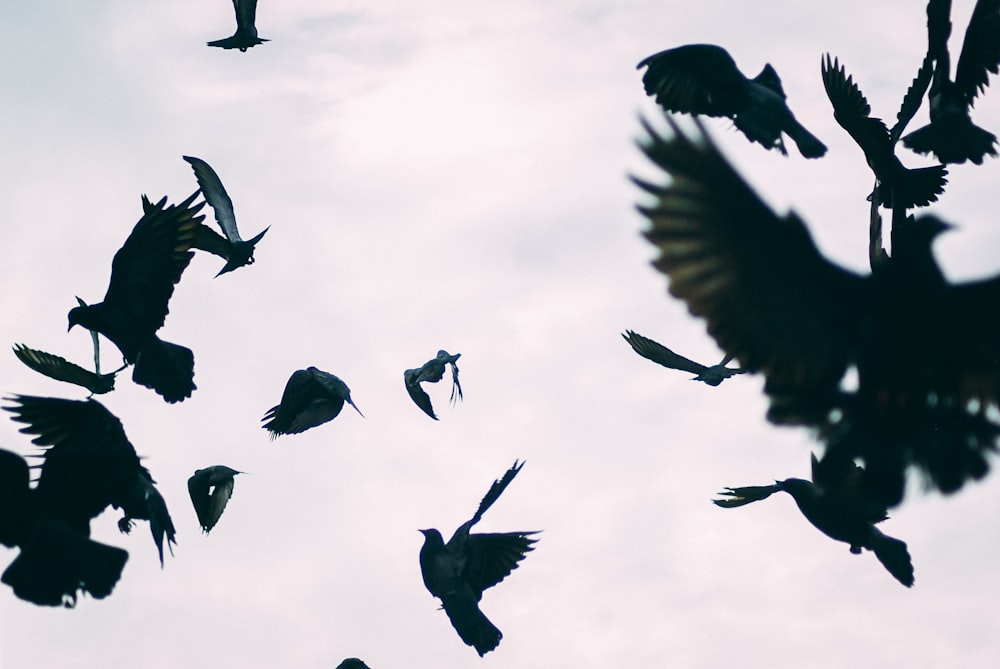
As one of the UK's most widespread corvid species, Crows exhibit remarkable intelligence and adaptability, employing complex problem-solving skills to navigate their urban and rural habitats.
These gregarious birds form intricate social structures, communicating through an extensive repertoire of calls and gestures. While often associated with scavenging, Crows also play a crucial role as seed dispensers, contributing to the regeneration of forests and woodlands.
Studies have shown that Crows possess complex cognitive abilities, including tool use, spatial memory, and the ability to recognise individual faces. They have been observed fashioning tools from twigs, leaves, and other materials to extract food from hard to reach places, demonstrating a level of ingenuity and innovation that is rare among birds.
In addition, Crows are also highly social birds that form tight-knit family groups and larger flocks. Within these social structures, Crows engage in cooperative behaviors such as mobbing predators, sharing food, and even engaging in play activities.
Chickadee
While not native to the UK, the Chickadee symbolises resilience and adaptability.
Belonging to the tit family, these small, agile birds are renowned for their distinctive "chick-a-dee-dee-dee" call, which echoes through woodlands and gardens.
With their affinity for tree cavities, Chickadees craft intricate nests where they lay chalky blue eggs, nurturing the next generation of these charming songbirds. Despite their small size, Chickadees possess a bold spirit, foraging for insects and seeds to sustain themselves throughout the year.
Carrier Pigeon

The history of the Carrier Pigeon is intertwined with the story of human communication and warfare.
Renowned for their remarkable homing instincts, these birds served as messengers during times of conflict, delivering vital messages across vast distances with unparalleled accuracy.
With their slender bodies and strong wings, Carrier Pigeons exemplify the extraordinary partnership between human beings and birds, highlighting the intelligence and adaptability of these remarkable creatures.
Chaffinch
The Chaffinch stands as one of the UK's most common and beloved songbirds, captivating birdwatchers and nature enthusiasts alike with its striking appearance and enchanting vocalisations.
Belonging to the finch family, these small songbirds exhibit remarkable diversity in plumage, with adult males adorned in hues of red, blue grey upper-parts, while females boast more subdued tones of dark brown and olive.
They are are generally considered monogamous birds during the breeding season. Once a pair forms, they typically remain together throughout the breeding period, cooperating in nest building, incubating eggs, and raising their young unlike some other birds.
Chiffchaff
The Chiffchaff, a member of the leaf warbler family, is a diminutive bird known for its olive green plumage, subtle wing bars, and distinctive eye ring. Despite its unassuming appearance, this small songbird captivates birdwatchers with its energetic foraging behavior and distinctive song.
Chiffchaffs are predominantly insectivorous, with their diet consisting primarily of small invertebrates such as flies, spiders, and caterpillars. Their foraging technique involves methodically probing foliage and branches in search of prey, utilising their slender bills to extract hidden insects from crevices and leaf litter.
Coal Tit
Coal Titsare widely distributed throughout the UK, inhabiting a variety of woodland habitats, including deciduous and coniferous forests, as well as urban parks and gardens.
They are particularly fond of mature woodlands with dense undergrowth, where they can forage for food and seek refuge from predators.
Collared Dove
The Collared Dove is characterised by its subtle gray plumage, slender body, and distinctive black neck collar. Native to subtropical regions of Asia and Africa, this species first colonised Europe in the mid 20th century, rapidly expanding its range across the continent.
The breeding season for Collared Doves typically begins in early spring, with pairs engaging in courtship displays that include mutual preening, bowing, and cooing. Nesting sites are chosen in a variety of locations, including trees, shrubs, and even man-made structures such as buildings and ledges.
Coot
Coots are aquatic birds found in ponds, lakes, and marshes throughout the UK. Their distinctive white bills and black plumage make them easy to spot as they forage for aquatic plants and small invertebrates.
Dominant Coots are usually solitary birds as these individuals tend to defend their territory.
Crane
While historically rare in the UK, the Common Crane (Grus grus) has seen a resurgence in recent years.
With their long necks, slender legs, and expansive wingspans, all these birds command attention as they soar through the skies or perform intricate courtship displays on the ground.
In recent years, sightings of Common Cranes have become more frequent across the UK, particularly in wetland areas and nature reserves where suitable habitat and food sources abound. The crane are omnivorous birds.
Cormorant
The Cormorant belongs to the family Phalacrocoracidae, commonly known as the cormorant family. This family includes over forty species of aquatic birds, distributed across the world's oceans, rivers, and lakes. Along with the Great Cormorant, several other species of cormorants are found in various regions, each adapted to specific habitats and ecological niches.
Cormorants are renowned for their fish eating habits and distinctive fishing behaviour. Equipped with streamlined bodies, long necks, and powerful webbed feet, they are adept swimmers and divers, capable of diving to considerable depths in pursuit of prey. Their sharp, hooked bills and serrated edges help them grasp and hold onto slippery fish underwater.
Corncrake
The Corncrake is a migratory bird species belonging to the rail family Rallidae. It is known for its elusive nature, preferring dense vegetation and tall grasslands for nesting and foraging. With its cryptic plumage of mottled brown and buffy tones, the Corncrake blends seamlessly into its habitat, making it challenging to spot despite its loud and distinctive call.
This bird's call is often described as a raspy, mechanical sound, resembling the grinding of two rough surfaces together. The call is most commonly heard during the breeding season, when males use it to establish territories and attract mates. The secretive nature of the Corncrake and its reliance on dense vegetation for nesting make it difficult to survey and monitor populations, contributing to its status as an endangered species.
Historically, the Corncrake was widespread across Europe, but habitat loss and changes in agricultural practices have led to significant declines in its population. Today, the remaining strongholds for breeding Corncrakes are found in areas with extensive grasslands, meadows, and hay fields, particularly in parts of Scotland, Ireland, and Eastern Europe.
Cuckoo
The Cuckoo is a migratory bird species belonging to the cuckoo family Cuculidae. It is known for its unique reproductive strategy, which involves laying eggs in the nests of other bird species, a behaviour known as brood parasitism. While the Cuckoo's melodic call is indeed a harbinger of spring, its reproductive habits have made it a controversial figure in the avian world.
Female Cuckoos carefully select host species whose nests closely match their own eggs in appearance, reducing the likelihood of rejection by the host parents. Once the Cuckoo egg hatches, the young Cuckoo often exhibits aggressive behaviour, ejecting the host's eggs or chicks from the nest to monopolise parental care and resources.
Curlew Sandpiper
The Curlew Sandpiper is a migratory shorebird that visits the UK's coastal wetlands during the breeding season.
One of the most striking features of the Curlew Sandpiper is its long, curved bill, which it uses to probe mudflats and shallow waters in search of small invertebrates, such as worms, crustaceans, and insects. This specialised feeding behaviour allows Curlew Sandpipers to exploit a wide range of habitats, from estuaries and coastal lagoons to salt marshes and tidal flats.
Cirl Bunting
The Cirl Bunting is a rare but charming sight in the UK's farmland and scrub land habitats.
Cirl Buntings are small, stocky birds belonging to the bunting family Emberizidae. They are distinguished by their striking appearance, with males boasting bright yellow plumage on their underparts, contrasting with olive-green upperparts and a distinctive black mask around their eyes. Females are slightly duller in coloration but still display subtle shades of yellow and green.
Chough
Choughs are medium sized corvids with glossy black plumage, long curved bills, and bright red legs and bills. Their unique appearance sets them apart from other members of the crow family, making them easily recognisable in their coastal and mountainous habitats.
One of the most remarkable features of Choughs is their acrobatic flight displays, which involve swooping, diving, and tumbling through the air with remarkable agility and precision. These aerial performances serve various purposes, including courtship displays, territorial defense, and social bonding within Chough communities.
Choughs are primarily found in coastal regions across Europe, Asia, and Africa, where they inhabit a variety of rocky and cliff side habitats.
Canary Birds
Canary birds (Serinus canaria), often simply referred to as canaries, hold a special place in the hearts of bird enthusiasts worldwide. Originating from the Canary Islands off the coast of Africa, these small songbirds have been cherished for centuries for their melodious songs, vibrant plumage, and charming personalities.
One of the most iconic features of canaries is their beautiful singing ability. Male canaries, in particular, are renowned for their complex and melodious songs, which they use to attract mates and establish territory. Their vocalisations range from sweet and soothing trills to intricate melodies, captivating listeners with their enchanting tunes.
Canary birds thrive in a variety of environments, ranging from dense forests to open pine woodlands and scrub land.
Other bird species across the globe beginning with C
Campbell Island Teal (Anas nesiotis):
The Campbell Island Teal is a rare and endangered species of dabbling duck endemic to Campbell Island, located in the subantarctic region of New Zealand. It is characterized by its mottled brown plumage and distinctive teal-colored speculum on its wings.
Common Crossbill (Loxia curvirostra):
The Common Crossbill is a finch species known for its crossed mandibles, which it uses to extract seeds from conifer cones. It exhibits a nomadic lifestyle, often moving in search of coniferous forests where it can find its primary food source.
Common Gull (Larus canus):
The Common Gull is a medium-sized gull species found in coastal and inland habitats across Europe and Asia. It has a gray back, white underparts, and distinctive yellow legs. Common Gulls are opportunistic feeders, scavenging for food along coastlines and in urban areas.
Common Redpoll (Acanthis flammea):
The Common Redpoll is a small finch species with a distinctive red forehead and black chin. It breeds in tundra habitats in the Arctic and migrates southward during the winter, often forming large flocks in search of food.
Common Scoter (Melanitta nigra):
The Common Scoter is a sea duck species found in coastal waters of Europe and Asia. It has dark plumage with a white patch on the forehead of the male. Common Scoters dive for mollusks, crustaceans, and aquatic insects as their primary food source.
Common Tern (Sterna hirundo):
The Common Tern is a migratory seabird species found in coastal regions around the world. It has a slender body, forked tail, and a black cap during the breeding season. Common Terns feed by diving into the water to catch fish and other small marine prey.
Caatinga Woodpecker (Celeus obrieni):
The Caatinga Woodpecker is a woodpecker species native to central and south America. It has distinctive black and white plumage with a red crown. Caatinga Woodpeckers inhabit dry forests and scrublands, where they forage for insects and larvae on tree trunks and branches.



